Sailing competitions are thrilling spectacles that captivate audiences worldwide, offering a unique blend of strategy, teamwork, and adrenaline. For those eager to document these dynamic events, capturing stunning sailing competition photos presents both a creative challenge and an opportunity to preserve memories that resonate long after the final race. Whether you’re a seasoned photographer or a casual enthusiast, mastering the art of sailing competition photography requires a combination of technical skills, strategic planning, and a keen eye for detail. This guide delves into the best practices, essential equipment, and expert tips to help you craft breathtaking photos that do justice to the beauty and intensity of yachting races.
Key Takeaways
– Capture Stunning Photos: Utilize natural light, experiment with angles, focus on key subjects, and capture high-energy moments to create impactful sailing competition photos.
– Essential Equipment: Invest in a high-quality camera, versatile lenses, a sturdy tripod, and weather-sealed gear for challenging conditions.
– Strategic Shooting Tips: Scout locations early, time your shots precisely, and adapt to dynamic lighting and compositions to maximize your photography efforts.
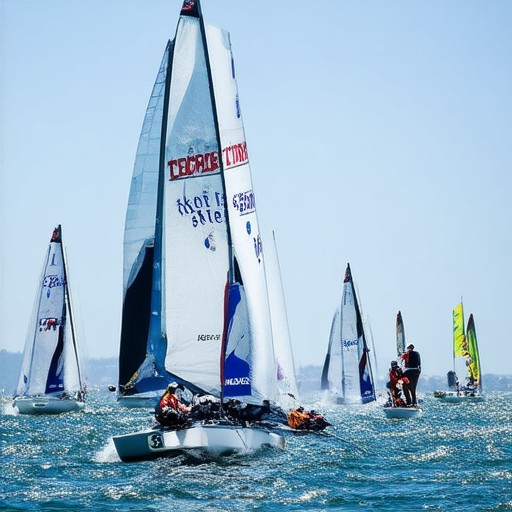
How to Capture Stunning Photos of Sailing Competitions
Capturing stunning photos of sailing competitions requires a combination of technical skills, creativity, and strategic planning. Here are some expert tips to help you get the most out of your photography:
- Choose the Right Location : Look for vantage points that offer unobstructed views of the racecourse. Consider shooting from a height, such as a mast or a nearby hill, to capture the grandeur of the event.
- Time Your Shots Wisely : The best times to photograph sailing competitions are during the start, finish, and key moments in the race. These are often when the action is most dynamic and photogenic.
- Utilize Natural Light : Aim to shoot during the golden hour, which provides soft, diffused light that enhances textures and colors. Avoid shooting directly into the sun, as it can cause harsh shadows.
- Experiment with Aperture and Shutter Speed : Use a lower aperture (like f/8 or smaller) to blur the background and isolate your subject. Increase your shutter speed to freeze the motion of the boats and sails.
- Composition Matters : Frame your shots to emphasize the energy and motion of the competition. Try to include the boat, its crew, and the surrounding environment to tell a story.
- Consider the Surroundings : Include elements like the ocean, clouds, and the audience to add depth and context to your photos. Wide-angle shots can capture the vastness of the scene.
- Use a Tripod : A tripod ensures stability, especially in windy conditions, allowing you to adjust settings quickly without worrying about camera movement.
- Include People : Don’t shy away from including the sailors, their expressions, and the spectators. These elements add a human dimension to your photos and convey the excitement of the event.
- Post-Processing : Edit your photos to enhance color balance, contrast, and detail. Tools like Adobe Lightroom or GIMP can help you bring out the best in your shots.
For more tips and inspiration, explore Sailing Photo Awards , a platform dedicated to celebrating the artistry of sailing photography.
How to Capture Stunning Photos of Sailing Competitions
Capturing stunning photos of sailing competitions requires a combination of technical skills, creativity, and strategic planning. Here are some expert tips to help you get the most out of your photography:
- Choose the Right Location : Look for vantage points that offer unobstructed views of the racecourse. Consider shooting from a height, such as a mast or a nearby hill, to capture the grandeur of the event.
- Time Your Shots Wisely : The best times to photograph sailing competitions are during the start, finish, and key moments in the race. These are often when the action is most dynamic and photogenic.
- Utilize Natural Light : Aim to shoot during the golden hour, which provides soft, diffused light that enhances textures and colors. Avoid shooting directly into the sun, as it can cause harsh shadows.
- Experiment with Aperture and Shutter Speed : Use a lower aperture (like f/8 or smaller) to blur the background and isolate your subject. Increase your shutter speed to freeze the motion of the boats and sails.
- Composition Matters : Frame your shots to emphasize the energy and motion of the competition. Try to include the boat, its crew, and the surrounding environment to tell a story.
- Consider the Surroundings : Include elements like the ocean, clouds, and the audience to add depth and context to your photos. Wide-angle shots can capture the vastness of the scene.
- Use a Tripod : A tripod ensures stability, especially in windy conditions, allowing you to adjust settings quickly without worrying about camera movement.
- Include People : Don’t shy away from including the sailors, their expressions, and the spectators. These elements add a human dimension to your photos and convey the excitement of the event.
- Post-Processing : Edit your photos to enhance color balance, contrast, and detail. Tools like Adobe Lightroom or GIMP can help you bring out the best in your shots.
For more tips and inspiration, explore Sailing Photo Awards , a platform dedicated to celebrating the artistry of sailing photography.
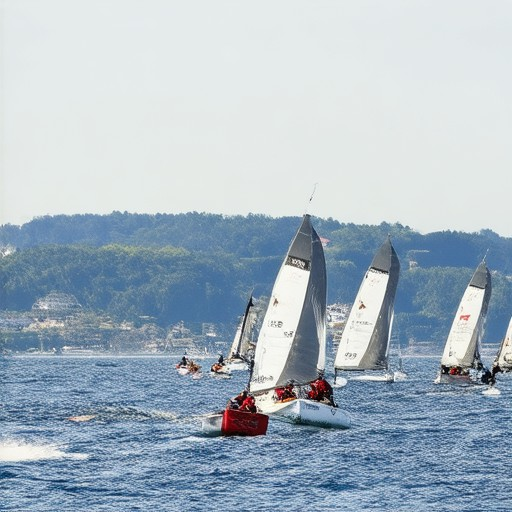
How to Capture Memorable Moments in Sailing Competitions Through Photography
To effectively capture the essence of sailing competitions, consider the following strategies:
- Master Timing : Be prepared to shoot at critical moments, such as the start, finish, or dramatic maneuvers. Use a fast lens to freeze action and capture dynamic poses.
- Composition Techniques : Utilize leading lines like the jibboom or bow to add motion and directionality. Experiment with panning shots to match the boat’s movement, ensuring stability with a tripod.
- Lighting Strategies : Take advantage of golden hours for soft lighting. Use a polarizing filter to balance harsh sunlight and minimize shadow issues. Consider shooting into the wind to soften backgrounds.
- Environmental Considerations : Keep backgrounds simple to avoid distractions. Focus on interesting subjects like rigging or crew interactions to add depth and story to your photos.
- Focus and Sharpness : Employ manual focus to maintain clarity in fast-paced scenarios. Adjust your aperture to control depth-of-field, emphasizing key elements of the scene.
- Post-Processing Enhancements : Crop images to emphasize action and emotion. Use color adjustments to heighten the mood, such as vibrant skies or dramatic water reflections.
- Human Element : Capture the intensity and camaraderie of the crew. Wide-angle shots can convey the scale and energy of the competition, while varied angles offer unique perspectives on boat dynamics.
By integrating these techniques, you’ll create compelling images that resonate with the spirit of sailing competitions.
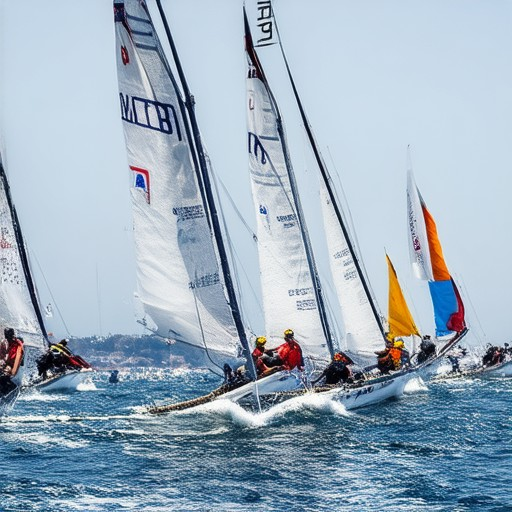
Top Tips for Capturing Stunning Photos During Sailing Competitions
Capturing the essence of sailing competitions requires a blend of technical skill and artistic vision. Here are expert tips to help you take home memories that will last a lifetime:
- Utilize Natural Light:** Sailing events often occur during daylight hours, so make the most of natural light. Position yourself to capture the sun’s rays illuminating the boats and their crews, creating dramatic contrasts and highlights.
- Experiment with Angles:** Try shooting from various angles—low, high, and side views—to emphasize the motion and power of the boats. A wider angle can capture the expanse of the water and the vastness of the event, while a telephoto lens can zoom in on the action and details.
- Focus on Key Subjects:** The boat, crew, and surrounding environment are all important elements. Zoom in on the boat’s design, the determined faces of the crew, or the dynamic interaction between competing vessels.
- Capture the Energy of the Event:** Look for moments of tension and excitement, such as the start of a race or a fierce battle on the water. These high-energy moments can create powerful and emotionally resonant images.
- Use a Tripod for Stability:** Sailing competitions can be unpredictable, with waves and movement affecting your camera. A tripod ensures stability, allowing you to adjust quickly and capture sharp shots despite the chaos.
- Incorporate People in Your Frames:** Include the crew members, race organizers, or spectators to add a human element to your photos. Their actions and emotions can make the image more relatable and engaging.
- Pay Attention to the Background:** Keep the background simple yet meaningful. Avoid clutter, but include elements like the sails, the horizon, or the shore to add depth and context to your shots.
- Time Your Shots Perfectly:** Many memorable moments happen in an instant. Practice timing your clicks to catch the exact moment—the start of a race, a dramatic maneuver, or a victory celebration.
- Explore Unique Perspectives:** Don’t shy away from unconventional angles. Consider shooting from the perspective of a spectator in a small boat or capturing reflections off the water for a serene yet dynamic effect.
- Consider Black-and-White or Panoramic Shots:** Sometimes, a monochromatic or wide-angle view can transform an ordinary photo into an extraordinary one. Experiment with these styles to find your personal signature.
For more inspiration and professional tips, explore the Sailing Photo Awards gallery and resources, where photographers share their best work and secrets to success.
Essential Equipment for Capturing High-Quality Sailing Competition Photos
- High-Quality Camera: A professional-grade digital camera with a full-frame sensor or a cropped sensor (APS-C) is ideal. Look for models with fast autofocus and high burst rates. Consider a Canon EOS series or a Nikon D Series camera.
- Lenses: – A telephoto lens (e.g., 70-200mm or 100-400mm) for capturing distant subjects like sailors on the horizon or action shots from the judge’s platform. – A wide-angle lens (e.g., 24mm or 28mm) to frame the expansive sea and sails. – A super-telephoto lens (e.g., 400mm or 600mm) for extreme close-ups of competitors and intricate details.
- Sturdy Tripod: A Manfrotto or B&H tripod with a strong, stable base is crucial for keeping your camera steady during rough conditions or movement on the boat.
- Cable Release or Remote Trigger: A Cable Release or wireless remote trigger ensures you can fire the shutter without touching the camera, reducing vibration and allowing for precise control during long exposures.
- External Flash with Diffuser: An off-camera Nissin flash with a diffuser helps soften harsh shadows and provides consistent lighting, especially when natural light is insufficient or uneven.
- Reflector: A Lowepro reflector can redirect sunlight back onto your subject, creating balanced lighting and preventing shadows from falling awkwardly.
- Weather-Sealed Gear: Invest in Fujifilm or Polaroid -branded cameras and accessories designed for rough conditions. Ensure your gear is waterproof or at least water-resistant.
- Batteries and Power Solutions: Carry extra Duracell or Anker batteries and a portable power bank for extended shooting sessions on the water.
- Memory Cards and Backup Storage: Use high-speed SanDisk or Western Digital memory cards and store backups in cloud services like Dropbox .
- Editing Software: Process your photos with professional-grade software like Adobe Lightroom or Capture One Pro to enhance color, contrast, and detail.

How to Capture the Most Exciting Moments in Sailing Competitions Through Photography
Capture the thrill of sailing competitions with strategic planning and expert techniques. Here’s how to maximize your photography efforts:
- Scout the Location Early
- Arrive early to identify optimal vantage points.
- Choose a spot that offers a broad view of the racecourse.
- Look for elevated positions for a clearer overview of the action.
- Time Your Shots Precisely
- Be ready to react swiftly to spontaneous moments.
- Focus on critical phases like the start, overtaking, and finish line.
- Use a fast shutter speed to freeze dynamic movements.
- Utilize Lighting Strategically
- Golden hour (sunrise/sunset) creates dramatic lighting effects.
- Midday light can be harsh; try late afternoon for softer illumination.
- Consider using a diffused light source to reduce glare.
- Master Composition Techniques
- Frame the action to emphasize energy and motion.
- Use a wide-angle lens to capture the full race scenario.
- ZOOM in on key subjects like sailors’ expressions and boat dynamics.
- Focus on Key Subjects
- Capture sailors’ intense expressions and body language.
- Highlight the boat’s movement and spray from the waves.
- Include the surrounding environment for context and atmosphere.
- Adapt to the Environment
- Be prepared for rapid weather changes.
- Carry a waterproof camera or backup device.
- Monitor weather forecasts to anticipate challenges.
- Experiment with Techniques
- Use a tripod for stability during dynamic movements.
- Employ a telephoto lens for detailed shots of boat interaction.
- Apply fast shutter speeds to freeze sail movement and wave action.
- 捕捉情感高潮
- 关注起跑、超车和终点线的关键时刻。
- 拍摄船员们在胜利中的兴奋表情和庆祝场景。
- 捕捉赛艇在冲刺过程中船员的紧张和专注面部表情。
- Post-Processing Tips
- 调整颜色以增强戏剧性,如使天空更亮丽或水更反光。
- 裁剪和框架图片以突出动作和能量。
- 使用编辑软件去除杂质并提升整体质量。
By combining these strategies, you’ll be able to capture the heart-pounding moments of sailing competitions and create stunning visual narratives that resonate with anyone who loves the sport.
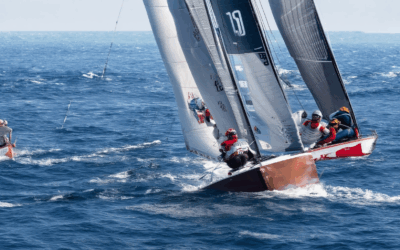
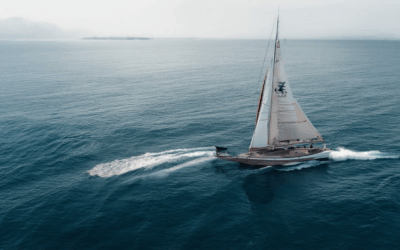
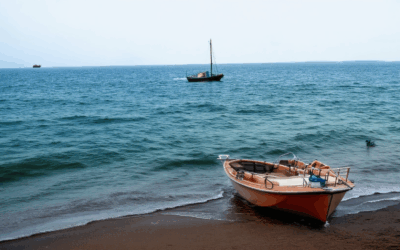
0 Comments